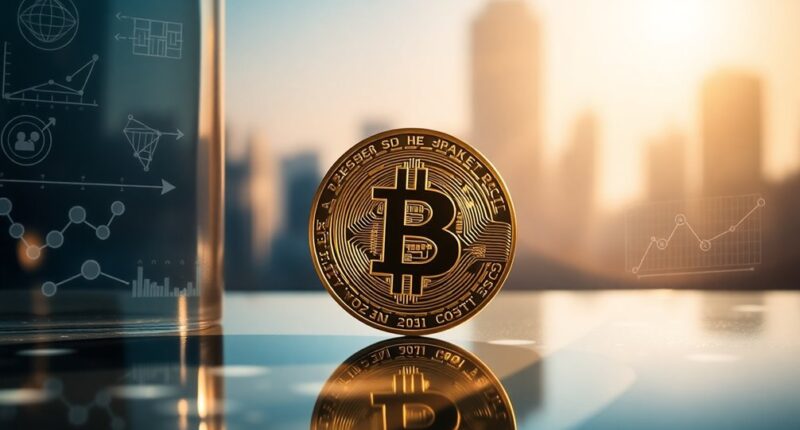When you think of Bitcoin, you might picture it as just digital gold, but there's much more beneath the surface. Its limited supply and decentralized nature certainly play a role, yet its growing acceptance as a medium of exchange adds another layer to its value. As economic uncertainties loom, understanding Bitcoin's full potential becomes crucial. What other factors contribute to its rising significance in today's financial landscape?

In the realm of digital finance, understanding Bitcoin's valuation is essential for navigating its complexities. At its core, Bitcoin's value stems from its limited supply. With only 21 million coins available, scarcity plays a significant role in its appeal, much like precious metals. This finite nature means that as demand increases, so can the price, making it crucial for you to keep an eye on market sentiment.
You'll find that Bitcoin's value fluctuates significantly based on demand and external factors like media coverage and regulatory changes. When positive news breaks or regulations seem favorable, you may witness a surge in interest and price. Conversely, negative headlines can lead to rapid declines, emphasizing the volatile environment in which Bitcoin operates.
It's also becoming a more accepted medium of exchange, with increasing numbers of businesses and consumers choosing to transact using Bitcoin. This growing utility enhances its fundamental value, creating a more robust case for adoption. As of April 2024, Bitcoin's market capitalization exceeded US$1.2 trillion, which underscores its rising acceptance and significance in the financial landscape.
Bitcoin is often viewed as a hedge against inflation and economic instability. Its decentralized nature and limited supply give it an edge over traditional currencies, which can be printed at will by central banks. This makes it an attractive option for investors seeking a store of value.
However, external events like halving, technological advancements, and regulatory developments can heavily influence its price. Halving events reduce the rewards for miners, impacting supply dynamics and potentially driving prices higher in the long run.
You should also consider the role of competition from other cryptocurrencies. New entrants can affect Bitcoin's market share, creating fluctuations in its pricing. Speculative trading practices further complicate things. Greed and fear of missing out (FOMO) can drive prices up or down unpredictably, adding to the volatility you often see in the market.
In comparison to traditional assets, Bitcoin shares similarities with gold due to its scarcity and perceived value as a safe haven. However, it offers advantages like portability and divisibility that gold can't match. Unlike fiat currencies, Bitcoin operates on a decentralized network, allowing for borderless transactions that are fast and cost-effective.
This unique blend of factors makes Bitcoin much more than just digital gold—it represents a revolutionary investment opportunity with the potential for significant returns, despite its known volatility. Understanding these layers can help you navigate the world of Bitcoin more effectively.









